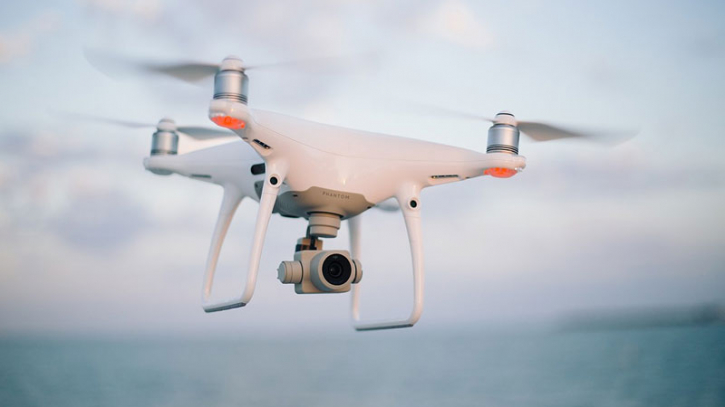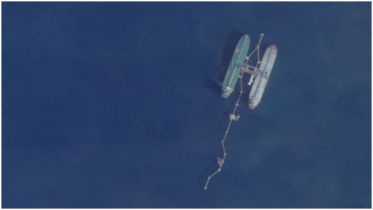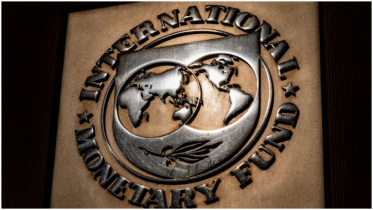Bangladesh should join the game of drones

In the 21st century, the use of unmanned aerial vehicles (UAVs), colloquially called ‘drones’, has played a crucial role in the partial realization of the widely-discussed revolution in military affairs (RMA). At present, UAVs are used by regular armed forces, irregular military formations, private military companies (PMCs), and insurgent and terrorist groups. They primarily use two types of UAVs – unmanned surveillance and reconnaissance aerial vehicles (USRAVs) and unmanned combat aerial vehicles (UCAVs). USRAVs, usually called ‘reconnaissance drones’ or ‘recon drones’, are used for intelligence, surveillance, target acquisition, and reconnaissance (ISTAR) purposes. On the other hand, UCAVs, colloquially called ‘strike drones’, are used to destroy or damage enemy targets, and include specifically designed combat drones, suicide/kamikaze drones (loitering munitions), weaponized commercial UAVs, armed quadcopters, and First-Person View (FPV) drones.
Game of drones: Revolutionizing warfare in the 21st century
Since the onset of the War on Terror in 2001, the United States (US) has conducted thousands of UCAV strikes on targets in numerous countries, including Afghanistan, Yemen, Somalia, Iraq, Pakistan, Libya, and Syria, using MQ-1 Predator, MQ-9 Reaper, and other UCAVs. Turkey has launched thousands of UCAV strikes on targets in Syria, Iraq, and Libya, using Bayraktar TB2, Anka, and other UCAVs. Similarly, Iran and Iranian-affiliated armed formations across West Asia have conducted thousands of UCAV strikes on targets in numerous countries, using a wide range of UCAVs, including Mohajer-6, Ababil-3, Shahed-129, Shahed-131, Shahed-136, and Arash UCAVs. Azerbaijan’s victory in the Armenian–Azerbaijani War in 2020 was largely facilitated by its extensive use of Turkish-made Bayraktar TB2 and Israeli-made Harop UCAVs.
A number of African states, including Ethiopia, Somalia, Mali, Burkina Faso, and Sudan, are using Turkish-made and/or Iranian-made UCAVs against insurgent and militant groups. In addition, the United Arab Emirates (UAE), Nigeria, and Pakistan have conducted UCAV strikes using Chinese-made Wing Loong II UCAVs. Most importantly, the ongoing Russian–Ukrainian War has metamorphosed into a full-blown ‘drone war.’ Russia and Ukraine have conducted thousands of UCAV strikes against each other’s targets, with Russia using Orion, Forpost, Lancet-1, Lancet-3, Geran-1, Geran-2, Moskal, and numerous types of FPV UCAVs, and Ukraine using Bayraktar TB2, Switchblade 300, Switchblade 600, Phoenix Ghost, Shark, RAM II, and numerous types of FPV UCAVs. In fact, the extensive use of UCAVs by both sides is one of the principal factors that have turned the war into a protracted and slow-moving ‘meat-grinder.’
Some UCAVs, such as MQ-1 Predator, MQ-9 Reaper, Bayraktar TB2, and Wing Loong II, are technologically sophisticated, costly, and hard to build. Yet, they cost only a fraction of manned aircraft. For instance, a US-made F-35A Lightning II stealth combat aircraft costs approximately $82.5 million, while a Turkish-made Bayraktar TB2 UCAV costs around $5 million. Also, while UCAVs such as MQ-9 Reaper and Bayraktar TB2 have proved vulnerable to modern air defense systems, most of the states and non-state armed groups around the world lack sophisticated air defense systems in sufficient quantity. Hence, it makes much more military and economic sense for most states to acquire a UCAV instead of a combat aircraft.
Moreover, suicide/kamikaze drones, quadcopters, and FPV drones are comparatively less sophisticated, cheaper, and easier to build than larger UCAVs. For instance, a Russian-made Lancet suicide UCAV costs between $30,000 and $35,000, an Iranian-made Shahed-136 suicide UCAV costs around $20,000, and a Russian-made Lotosnik FPV UCAV costs merely $400. Also, commercial drones, such as Chinese-made Mavic, can be easily converted into UCAVs. During the initial phases of the Russian–Ukrainian War, both Russian and Ukrainian troops acquired thousands of Mavic commercial UAVs from Chinese e-commerce giant Alibaba, and converted them into UCAVs. Moreover, Russian and Ukrainian volunteers have built tens of thousands of FPV UCAVs for their armed forces, and later their governments took the lead in the initiative. So far, these low-cost, small-sized, and easily-built UCAVs have killed thousands of troops on both sides, and destroyed hundreds of pieces of heavy military equipment, including tanks, infantry fighting vehicles (IFVs), artillery pieces, air defense systems, and even combat aircrafts.
Thus, UCAVs have emerged a very useful component of warfare at the operational and tactical, and in some cases, strategic level in the 21st century. As a result, scores of states and non-state armed groups have acquired various types of UCAVs to augment their military power. Even Bangladesh’s neighbours have acquired different types of UCAVs. India has already acquired Israeli-made Mark-2 UCAVs, is seeking to acquire US-made MQ-1 Predator UCAVs, and is developing its indigenous UCAVs called SWiFT and Ghatak. Meanwhile, Myanmar has acquired Chinese-made Rainbow CH-3A UCAVs and obtained the permission to produce Chinese-made Rainbow CH-4 UCAVs in Myanmar. Myanmar has used these UCAVs to conduct strikes against ethnic armed organizations (EAOs). Meanwhile, Myanmar’s EAOs are using a fleet of cheap and small UCAVs as their ‘air force’ and conducting scores of UCAV strikes on the Tatmadaw, the Myanmar Armed Forces.
Bangladesh’s position in the ‘Game of drones’
Since the 1930s, airpower has been a crucial element in defensive and offensive warfare. However, the Bangladesh Air Force and the aviation wings of the Bangladesh Army and the Bangladesh Navy currently possess only a modest amount of air assets owing to a host of factors, including the high cost of manned aircraft and the peaceful orientation of the country’s foreign policy. However, taking into account the explosion of conflicts in its immediate neighbourhood and the intensification of geopolitical rivalries in the Indo-Pacific region, Bangladesh should build up its air capabilities to protect itself from the scourge of conflicts. Moreover, Bangladesh is facing a low-intensity insurgency in the Chattogram Hill Tracts (CHT), so boosting up the air capabilities of the armed forces would protect the country from armed attacks and save the lives of soldiers and civilians.
Under these circumstances, the acquisition of UCAVs can provide the country with a cost-effective and practical way to enhance its air capabilities. The Bangladesh Armed Forces currently operate a fleet of USRAVs of primarily Slovenian and Italian origin, but its UCAV fleet is very small. The Bangladesh Army acquired six Bayraktar TB2 UCAVs from Turkey in December 2023. While the acquisition of Turkish-made UCAVs is a step in the right direction, it should be treated as only a preliminary phase in a long-drawn process.
The ongoing wars across the world and the immediate neighborhood have demonstrated the usefulness and cost-effectiveness of UCAVs. Taking these experiences into account, Bangladesh should undertake a national project for the acquisition and indigenization of UCAVs.
First, over the previous decade, Bangladesh has developed a comprehensive defense partnership with Turkey, and Turkey has expressed its interest in sharing military technology with Bangladesh. Ankara has already undertaken the initiatives to jointly produce UCAVs with a number of states, including Azerbaijan, Saudi Arabia, and Ukraine. Bangladesh can cooperate with Turkey in this regard and go for joint production of UCAVs and possibly the establishment of a UCAV factory on Bangladeshi territory.
Second, a number of countries, ranging from Serbia to South Korea, have developed suicide/kamikaze UCAVs. Bangladesh shared good bilateral ties with many of these states, so Dhaka can acquire these types of UCAVs from those countries.
Finally, the construction of FPV UCAVs is a comparatively easy process, and does not require the use of large and sophisticated production systems. In Myanmar, engineering students are at the forefront of the development of UCAVs. Bangladesh has thousands of engineers and UAV enthusiasts, so the country can employ their service for the production of indigenous FPV UCAVs.
Thus, under current circumstances, Bangladesh should prioritize the acquisition and indigenous production of UCAVs to protect its national security, sovereignty, and territorial integrity.
Source: The Geo Politics
.png)




